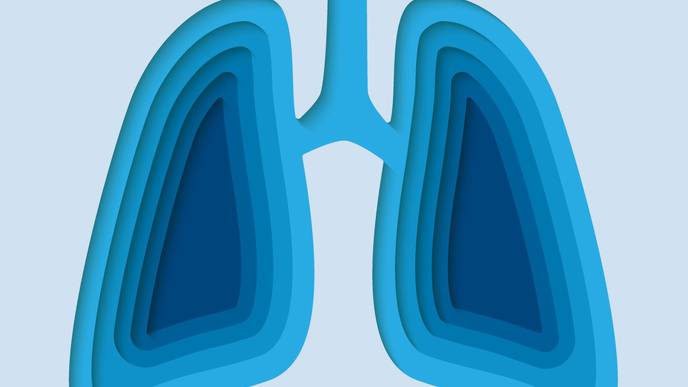ReachMD
Be part of the knowledge.™Long-Term Noninvasive Ventilation May Reduce Mortality in Patients with AECOPD, Study Finds

Although most studies have found no mortality benefit associated with long-term noninvasive treatment (LTH-NIV) in patients with acute hypercapnic exacerbations of chronic obstructive pulmonary disease (AECOPD), a recent study published in Scientific Reportsfound that first and second-year survival rates significantly improved in patients receiving LTH-NIV and showed a significant mortality risk among patients who did not receive LTH-NIV.
“In our retrospective study, taking confounders under account, we were able to demonstrate a significant influence of NIV treatment on the survival of patients receiving long-term noninvasive ventilation over a period of 2 years after an acute exacerbation of COPD,” the study authors wrote. “To the best of our knowledge, we were therefore for the first time able to prove a positive effect of NIV in this group of patients under ‘real world conditions.'"
The study included a total of 151 patients with COPD who were treated at the Greifswald University Hospital between January 1, 2012, to June 30, 2019. Eligibility for NIV treatment was based on acute exacerbations and hypercapnic respiratory failure.
Patients were divided into 2 groups: group 1 included 83 patients discharged from the hospital with home LTH-NIV, and group 2 included 68 discharged patients who did not receive LTH-NIV. The researchers also obtained patient background information, such as date of birth, age, sex, height, weight, COPD stage, smoking status, date of inpatient admission and discharge, quality of life, comorbidities, and treatment history.
The researchers followed up with patients over a 2-year period starting from the day of their initial hospital discharge. Follow-ups included patient information on inpatient and outpatient stays, as well as any doctor diagnoses and letters. Additionally, all patients were asked to schedule a first check-up at the hospital's outpatient pneumology clinic approximately 8 to 12 weeks after being discharged.
During the follow-up period, group differences were seen even prior to a predetermined visit at 6 to 8 weeks after discharge. Among the group receiving NIV therapy, 3 (3.6%) patients had died, and 4 (4.8%) patients were hospitalized due to clinical deterioration. However, in the non-NIV group, 3 (5%) patients had died, and 9 (15%) patients were hospitalized.
After 2 years, 33 patients in the NIV group and 12 patients in the non-NIV group agreed to have an additional consultation.
As a result, the researchers found no significant difference (P = 0.233) between both groups regarding readmission due to worsening of symptoms. However, first and second-year survival rates in the group receiving NIV therapy increased to 82% and 72%, respectively, vs 67% to 55% in the non-NIV group (P = .023). Furthermore, the researchers identified a significant mortality risk among the non-NIV group (HR, 2.82; 95% CI, 1.31-6.03).
Although the researchers acknowledge that this was a retrospective study and was missing some clinical and laboratory data, they believe the findings support the use of LTH-NIV for patients with AECOPD, especially within the first 2 years after hospitalization. Finally, the researchers emphasize a need for more research to confirm this positive effect.
“While there is a clear recommendation for the initiation of LTH-NIV after successful weaning from long-term ventilation, further investigations are certainly required to determine the indication in patients after hypercapnic AECOPD with respiratory acidosis.”
Reference
Ralf E, Heine A, Obst A, et al. Acute COPD exacerbation treatment with noninvasive ventilation. Scientific Reports. 2023;13(1). doi:10.1038/s41598-023-33871-z
Facebook Comments